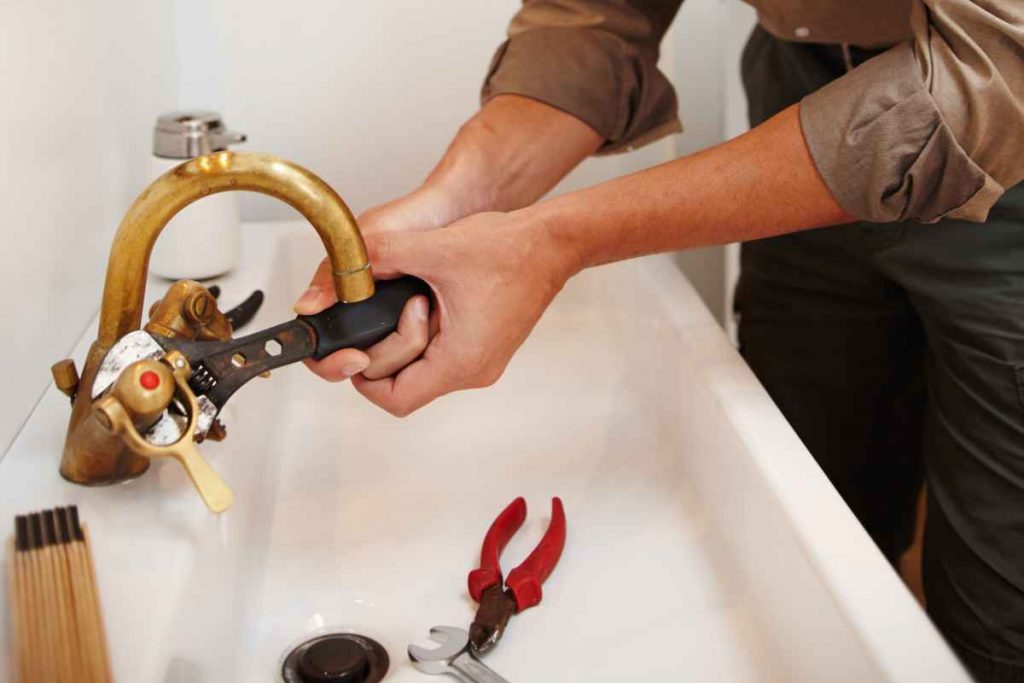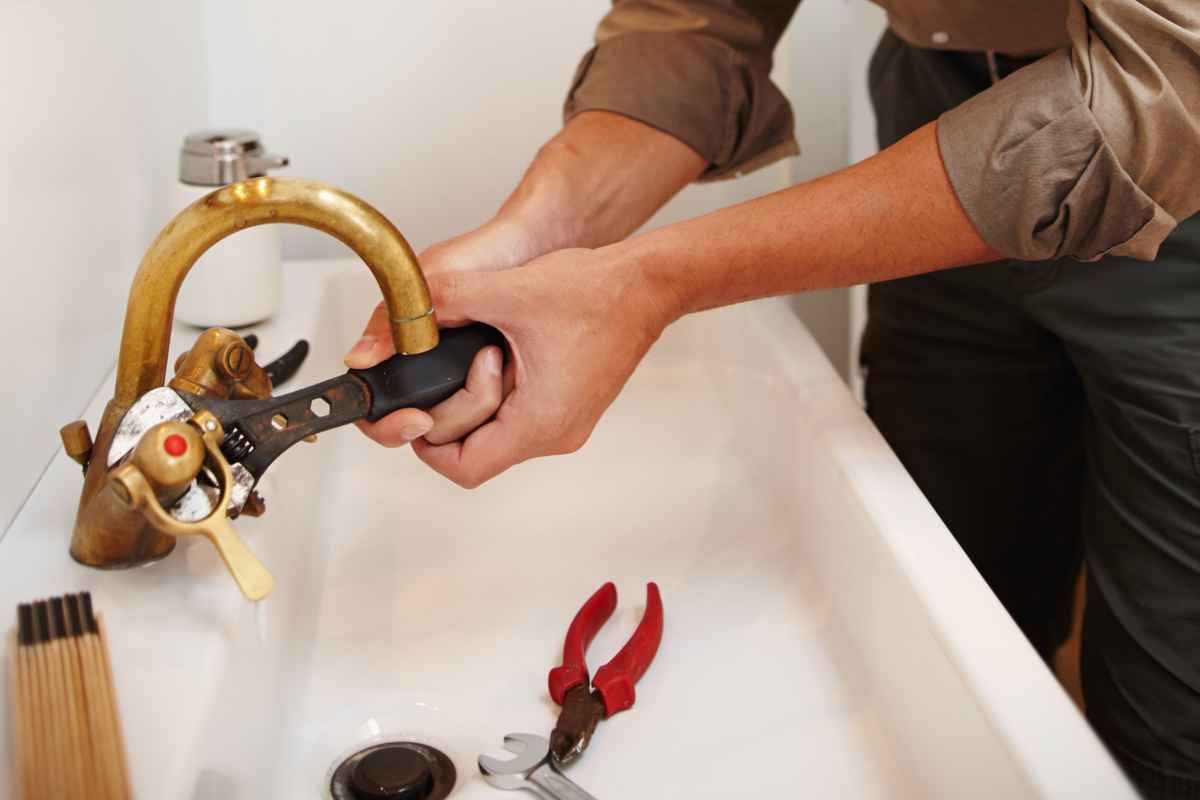
Dealing with a leaking tap? You probably need to replace the tap washer. The subtle yet insistent dripping is enough to drive you mad! And yet, it’s often dismissed as a minor problem that doesn’t require prompt attention. So you turn the tap off as tight as you can and hope for the best!
However, that drip-drip-drip is the sound of all the wasted water you’ll be paying for in your next water bill. And to make things worse, a leaky tap always seems to kick off at night when you’re trying to sleep. The sooner you deal with the problem the better – for your sanity and your bank account!
Fixing a leaking tap is a relatively simple job, but before you grab your DIY toolbelt, you’ll want to know whether this repair requires tap washer replacement or if you need to reseat taps. Read on to learn more about fixing a leaky tap.
What’s the difference between a tap washer and a tap seat?
Your taps are made up of multiple working parts that ensure that water flows when you turn the tap handle on and stops when you turn it off. If your taps are leaking, there are two common culprits – the tap washer and the tap seat.
Tap Washers
A tap washer is a small, round, flat device with a hole in the middle. Typically made of rubber, nylon, or ceramic, tap washers are used inside a tap fixture to control the flow of water. When you turn a tap to the off position, the disc-shaped washer presses against the tap seat creating a tight seal to stop water flow completely. When a tap washer is functioning correctly, there should be no dripping or leaking.
However, tap washers inevitably wear out or break over time. When this happens, you’ll probably notice you need to tighten the tap more to stop the water completely, and eventually, the tap will drip no matter how tight you turn the handle. And if you let it go long enough, the washer will finally fail completely and you will be left with a tap that is running continuously, not just dripping.
Tap Seats
A tap seat is the flat, smooth metal surface inside the tap body that the washer presses against to create a drip-proof seal. Over time, the seat can develop mineral deposits and “scars” on the surface, making it impossible for the tap washer to form an effective seal.
How do I know which one is causing leaks?
Tap washers have a lifespan of between 1-2 years so most leaky tap repairs begin with inspecting the washers for wear and tear and replacing them as needed.
However, it’s common for DIYers to replace tap washers only to discover that their taps are still leaking. This could indicate that the tap seat is damaged. A visual inspection of the seat is usually enough to determine whether the surface is smooth or has cracks, corrosion, or other damage. Depending on the extent of the damage, you’ll either need to reseat taps (grind the surface smooth) or replace the tap seat altogether.
Can I replace tap washers and reseat taps myself?
The simplest and most reliable way to deal with the issue is to call a plumber for leaking tap assessment and repair. However, replacing a washer is typically a straightforward DIY task for a confident handyperson. With basic plumbing skills and the right tools, this is a job that many homeowners perform themselves with success.
Taps are made up of multiple parts including:
- cap
- spindle screw
- handle
- cover
- bonnet
- fibre washer
- spindle
- O-ring
- tap washer
- tap seat
- tap body
You’ll need to disassemble your taps, carry out the repairs, and then reassemble all the parts again – in the right order! It’s a small job for a plumber but can be complex if you don’t know what you’re doing.
Common mistakes when fixing a leaking tap
Read any Aussie DIY forum and you’ll be advised multiple times that calling a Sydney plumber for small jobs like tap washer replacement is a waste of money. However, what many keen DIYers underestimate is the true cost of DIY plumbing gone wrong.
When it comes to replacing tap washers and reseating taps, there are some common mistakes that can end up costing you. These include:
- Using the wrong tools: from aesthetic damage like scratching your tapware to causing structural damage to the tap seat, using the wrong tools to fix a leaky tap can cost you more than you bargained for.
- Using the wrong size tap washer: most internal taps require a standard 13mm washer – but non-standard taps may differ. External taps like those in your garden typically require 15mm washers. Always check you’re using the right size for your taps.
- Poor quality washers used to replace tap washers: you should source good quality washers from plumbing suppliers for the best fit and a longer life on the washer.
- Forgetting to turn off the water supply first: avoid a face full of water and unexpected flooding. Always turn the water off at the mains before attempting any DIY plumbing!
- Reassembling the tap incorrectly: identifying and replacing a faulty washer is relatively straightforward, but for some, putting all those tap parts back together isn’t. You’ll also need to ensure you don’t over-tighten nuts as this can cause damage.
- Dropping components down the drain: it sounds silly but you wouldn’t believe how often people forget to plug the sink before working on their taps and then…bye bye, tap cap!
Keen to avoid DIY plumbing pitfalls? Call in the local plumber Ryde homeowners rely on for quality plumbing at a fair price. Just call Joe!
Should I call a plumber for a leaking tap?
Should you replace tap washers yourself? There are loads of how-to articles and videos that can guide you through the process. So if you’ve had success with simple DIY home maintenance before and are generally confident with taking things apart and putting them back together, then you may like to give washer replacement a go.
However, to reseat taps successfully is more of a challenge. You’ll find reseating tools at your local hardware which enable you to reface the seat. But if the condition of the tap seat is particularly poor, this may not be a viable option.
Your Sydney plumber can quickly assess what’s causing your tap to leak and ensure all the relevant components are repaired or replaced. Save time and hassle – and enjoy the peace of mind that comes with knowing plumbing repairs have been done correctly.


